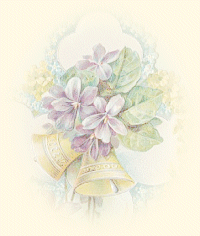
CONTENTS
A hot cup of tea and several nursery and/or seed catalogs chase
away the winter chills. Visions of beautiful plants in full bloom,
fragrance in the summer breeze, the rewards of a job well done. Just
how do we turn these daydreams into a reality? Well, we start now, whenthere is not much we can actually do outside, yet. We read and plan and think and do it all over again until it is just right. Then when the warm spring winds return, we will be ready, able and prepared!
First step, is to take a look and see what we need. Take a look
outside and remember where last year's bare spots were, take note of the
conditions there (light,soil,moisture). Stand across the street and
look at your house, go in your house and look out the windows. Where do
you need height, color, a privacy screen? Now that we have a wish list,
let us look at some basics.
Dirt, soil thats pretty basic, and more important than you may think.
The majority of perennials like a loose, humusy loam that is moist but
well-drained. Loam has some clay, some silt, and some sand, plus enough
organic material to make it dark, crumbly and easy to dig. This type
of soil is best for healthy root developement and evenness of water
supply. Consider making raised beds of improved soil in areas where con-
ditions are unusually poor. Some perennials will do well in poor, sandy,
wet or dry conditions as well, just make sure you are aware of your plants'
preference before planting.
Next basic, light. To decipher the catalog codes; full sun is 8 or
more hours of direct sunlight, partial sun is 5-8 hours of direct sun,
less than that is partial shade, full shade receives only a minimum of
light. Partial shade generally cannot take the afternoon sun and should be set in east or southeast facing locations, or where there is available
afternoon shade.
Lets touch a little on where you live, zones. You can bend the rules here just a little. Some plants kept in containers and sheltered in the worst winter months may survive where they ordinarily wouldn't in the ground. Judge for yourself how much conditions can be altered if you just must have that Hawaiian Lei Tree in Detroit. The reverse is also true, some perennials really need a nice cold snap, to perform well in the spring.
We are talking perennials here, but, leave room for a few annuals, shrubs, herbs, veriegated foliage; as these can really perk up a bed or border. Use them to add color when many of your perennials aren't blooming, and for form when they are out of season. Don't forget to vary heights and forms to create an interesting and eye-catching display.
Color should be an important consideration as well. Do you want to use one main color supported by multiple large groups and accented by smaller groups of an accent color, differant shades of one or two complimentary colors, or a rainbow effect

RETURN TO MAIN PAGE
This page has been visited
dleemi253@yahoo.com
| Get Gif Girl's Web Design Tips on Tripod |